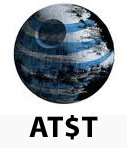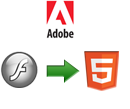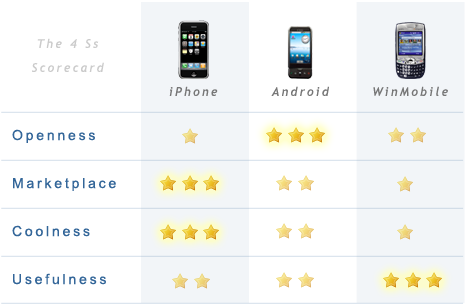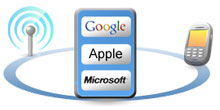Introducing BriteSnow, Inc – We Build HTML5 Enterprise Applications For Web, Mobile, and Tablets
October 24th, 2012 by jeremychone | Comments Off|
|
Beside of all this, the one thing that sets us apart from others is our passion for all of the details surrounding all aspects of an application experience, from server and cloud architecture to UI responsiveness and HTML5 optimization.
We are convinced that HTML is the technology of the future for a large majority of applications from a business as well as a technical point of view. And the thing we discovered during this three years is that with the right architectural approach, building advanced HTML5 applications for PCs, mobile devices, and tablets can be as efficient and scalable as creating desktop or native type of applications.
To accomplish this vision, we created two open source technologies, Snow, which is a Java lightweight server framework based on Google Guice, and brite, an lightweight and DOM Centric HTML5 MVC framework based on jQuery. Both of these technologies are completely free, fully open source (Apache V2 for Snow and MIT for Brite), and are designed to build high-end modern applications using the best of Java on the server, and the best of HTML5 on the client.
We are going to blog quite a bit to share everything we have learned over the last few years about building high end HTML5 applications. So, feel free to follow us on
Twitter, Facebook, or Google Plus.
Feel free to visit us at BriteSnow.com or contact us at info@britesnow.com

 I am not sure if Randall Stephenson, CEO of AT&T, was misinformed, dishonest, or just carried away with his new crusade when
I am not sure if Randall Stephenson, CEO of AT&T, was misinformed, dishonest, or just carried away with his new crusade when 



 Apple is undeniably the most proprietary and closed technology company in the software industry. In fact, Apple makes companies like Microsoft and Adobe look like nonprofit open source organizations in comparison.
Apple is undeniably the most proprietary and closed technology company in the software industry. In fact, Apple makes companies like Microsoft and Adobe look like nonprofit open source organizations in comparison.  At JavaOne, Larry Ellison has made some very encouraging
At JavaOne, Larry Ellison has made some very encouraging 
 The value chain used to be one of the main differences between the mobile and PC markets. The PC industry was driven by software vendors (i.e., Microsoft, Apple, Oracle), while the mobile industry was controlled by the Telcos and device manufacturers. For a long time, the Telcos even had the power to remove features from devices that they felt caused too much competition with their own service offerings. For example,
The value chain used to be one of the main differences between the mobile and PC markets. The PC industry was driven by software vendors (i.e., Microsoft, Apple, Oracle), while the mobile industry was controlled by the Telcos and device manufacturers. For a long time, the Telcos even had the power to remove features from devices that they felt caused too much competition with their own service offerings. For example,